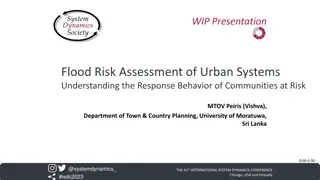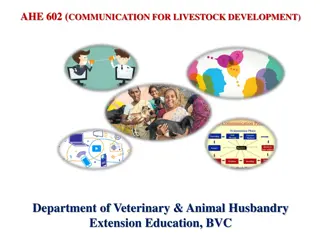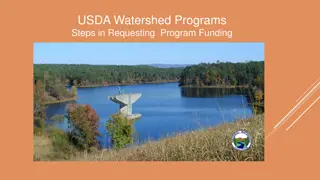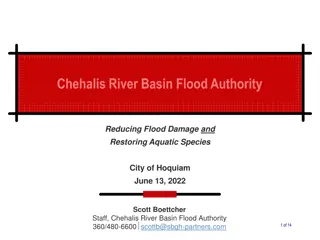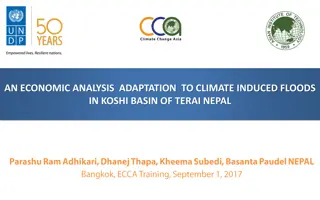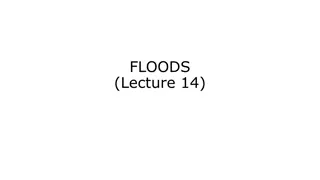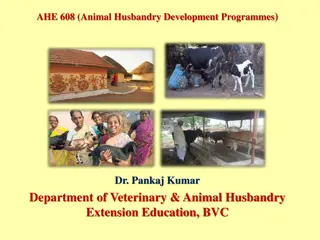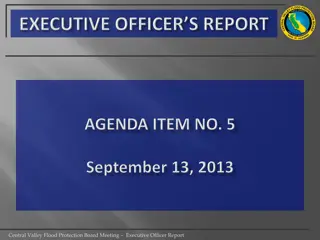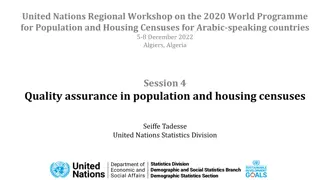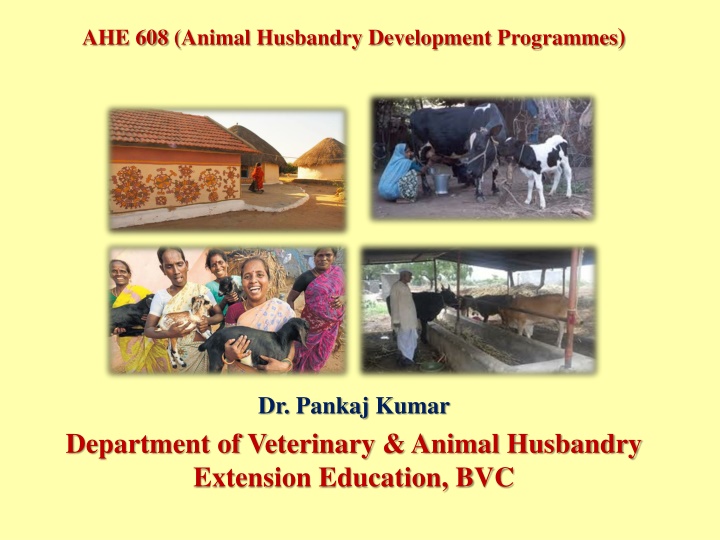
Development Programmes in Animal Husbandry: Operation Flood
The Animal Husbandry Development Programmes, particularly Operation Flood, initiated significant advancements in dairy development through phases led by Dr. Verghese Kurien. Operation Flood I focused on increasing dairy processing capacity, resettling cattle, and establishing milk procurement systems. The second phase aimed to build a sustainable dairy industry for rural milk producers. The project emphasized improving animal productivity and creating a National Milk Grid connecting rural and urban areas.
Download Presentation

Please find below an Image/Link to download the presentation.
The content on the website is provided AS IS for your information and personal use only. It may not be sold, licensed, or shared on other websites without obtaining consent from the author. If you encounter any issues during the download, it is possible that the publisher has removed the file from their server.
You are allowed to download the files provided on this website for personal or commercial use, subject to the condition that they are used lawfully. All files are the property of their respective owners.
The content on the website is provided AS IS for your information and personal use only. It may not be sold, licensed, or shared on other websites without obtaining consent from the author.
E N D
Presentation Transcript
AHE 608 (Animal Husbandry Development Programmes) Dr. Pankaj Kumar Department of Veterinary & Animal Husbandry Extension Education, BVC
OPERATION FLOOD (OF) Started in 1970 (OF/WFP 618) Implemented by NDDB in three Phases Made a tremendous impact on the dairy development Dr.Verghese Kurien - Father of White Revolution Dairy commodity surpluses in Europe (Threat & opportunity) Designed basically as a marketing project EEC finance the programme Operation Flood is a programme designed to develop dairying by replicating the Anand Model
OBJECTIVES OF OPERATION FLOOD I (1970- 81) Increase the capacity and throughput of dairy processing facilities Resettlement of city cattle in rural areas Development of basic transportation and storage network to facilitate regional and seasonal balancing of milk supply and demand Development of milk procurement systems in rural areas To improve the productivity of animals To assure the rural milk producers of a year round stable milk market and To establish 14 milch animal centres
Finance to first phase Under this project, WFP donated 1, 26,000 MT of Skim Milk Powder and 42,000 MT of Butter oil. Through sale of these commodities, funds to the tune of Rs.1164 millions were generated and were utilized for creating infrastructure facilities necessary for dairy development.
The major achievements in the first phase increase in milk production from 21 m. tons in 1970 to 30 m. tons in 1979-80, reaching the target of 29 lakh litres per day in processing of milk for supply to the four metropolis, establishment of dairy cooperatives in 18 major milk shed areas and establishment of 14 milch animal centres and the Institute of Rural Management at Anand (IRMA).
OBJECTIVES OF OPERATION FLOOD II (1981-85) to enable 10 million rural milk producer families to build a viable self sustaining dairy industry by mid 1985, to enable the milk producers to rear a National Milch Herd of 14 million crossbred cows and upgraded buffaloes during 1980s and to establish a National Milk Grid which will link the rural milk sheds to the major demand centres with urban population of about 150 million.
Some of the notable achievements of Operation flood II generation of funds amounting to Rs. 2323 millions through sale of gift commodities up to November, 1984, expansion of handling capacities of four metro dairies from 31 lakh litres per day to 35 lakh litres per day by the end of October, 1984, increase in the number of village cooperatives to 43,000 covering 4.25 million milk producers, substantial increase in the production of milk powder, putting 622 road and 87 rail milk tankers into service under National Milk Grid and establishment of godowns with a capacity of 3000 tons to store dairy commodities.
OPERATION FLOOD III (1985-96) The gains obtained in the earlier phases were further consolidated in Phase III.
Some of the significant achievements of OF were Increase in the production of milk leading to a raise in the per capita availability of milk to 193 grams per day in 1994 from 107 grams in 1975. Supply of milk to about 300 million consumers spread in 550 cities and towns at a reasonable price. Procuring milk daily from 10 million producers spread in 74,000 villages and earning an incremental income of about Rs.2500 crores from sale of milk. Establishment of a nation wide network of multi - tier milk producers co-operative societies. Modernization and expansion of dairy industry. Self-sufficiency in milk and milk products thus putting an end to commercial imports of milk solids. Indigenous production of dairy equipments.
STRATEGY ADOPTED AND INTERVENTIONS IN OFP Operation flood was designed on some simple assumptions viz. Dairying is complementary to agriculture and provides supplementary income. Production by million of farmers who are living far-off from the market. Market and price incentives are essential to increase production.
Interventions based on assumptions Strategic intervention We received food aid from the UN and European Economic Community (EEC). Institutional intervention In replicating the Anand pattern and special focus on professional management. Technological intervention adequate price incentives to encourage major input purchase decisions Testing the milk, transporting and its processing
LESSONS LEARNT THROUGH IMPLEMENTATION May be considered the central event of twentieth- century dairying in India One of the challenging aspects of dairy development is the movement of milk over long distances To balance seasonal variations created buffer stocking. The investment and achievements in modernizing the Indian dairy industry have had a major impact on milk production.
A number of programmers and policies have played a role in this success. Flood has ensured that they receive the maximum return from each rupee spent by consumers It has demonstrated how food aid can be used to enhance domestic production if administered with care. Some of the dairy plants set up by NDDB are based on the latest technology and are comparable to those in advanced countries. The unique cooperative make the adoption of technologies and the dissemination of knowledge relatively easy, and this has enabled Operation Flood to facilitate the application of modern technologies to enhance milk production.





